NODYCON 2021 Keynotes
Keynotes
Exploring predictability of extreme climate events via a complex network approach
Juergen Kurths
Potsdam Institute for Climate Impact Research & Humboldt University, Berlin
E-mail: Juergen.Kurths@pik-potsdam.de
The Earth system is a very complex and dynamical system based on various feedbacks. This makes predictions and risk analysis even of very strong (sometime extreme) events as floods, landslides, heatwaves, earthquakes etc. a challenging task. Here I will introduce a recently developed approach via complex networks mainly to analyze strong climate events. This leads to an inverse problem: Is there a backbone-like structure underlying the climate system? For this we propose a method to reconstruct and analyze a complex network from data generated by a spatio-temporal dynamical system. This approach enables us to uncover relations to global and regional circulation patterns in oceans and atmosphere, which leads to construct substantially better predictions, in particular of strong rainfall in Bolivia, of the onset of the Indian Summer Monsoon and El Nino.
References
N. Boers, B. Bookhagen, H.M.J. Barbosa, N. Marwan, J. Kurths, and J.A. Marengo, Nature Communications 5, 5199 (2014)
N. Boers, R. Donner, B. Bookhagen, and J. Kurths, Climate Dynamics 45, 619 (2015)
J. Runge et al., Nature Communications 6, 8502 (2015)
V. Stolbova, E. Surovyatkina, B. Bookhagen, and J. Kurths, Geophys. Res. Lett. (2016)
D. Eroglu, F. McRobies, I. Ozken, T. Stemler, K. Wyrwoll, S. Breitenbach, N. Marwan, J. Kurths, Nature Communications 7, 12929 (2016)
B. Goswami, N. Boers, A. Rheinwalt, N. Marwan, J. Heitzig, S. Breitenbach, J. Kurths, Nature Communications 9, 48(2018)
N. Boers, B. Goswami, A. Rheinwalt, B. Bookhagen, B. Hoskins, J. Kurths, Nature 566, 373 (2019)
J. Meng, J. Fan, J. Ludescher, A. Agarwal, X. Chen, A. Bunde, J. Kurths, H. Schellnhuber, PNAS 117, 177 (2020)
Bio-sketch of Juergen Kurths
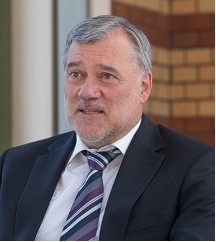
JÜRGEN KURTHS studied mathematics at the University of Rostock. He received the Ph.D.degree from the GDR Academy of Sciences, in 1983. He was a Full Professor with the University of Potsdam, from 1994 to 2008. He has been a Professor of nonlinear dynamics at the Humboldt University, Berlin, and the Chair of the Research Domain Complexity Science of the Potsdam Institute for Climate Impact Research, since 2008. He has published more than 600 articles that are cited more than 45,000 times (H-factor: 99). His primary research interests include synchronization, complex networks, and time series analysis and their applications in Earth Sciences, Physiology, infrastructure and others. He is a Fellow of the American Physical Society. He became a member of the Academia Europaea, in 2010. He received the Alexander von Humboldt Research Award in 2005, and the Richardson award from the European Geoscience Union in 2013. He got eight Honorary Doctorates and Honorary Professors.
Fast reduction of nonlinear finite-element models to spectral submanifolds
George Haller
Institute for Mechanical Systems
ETH Zürich, Switzerland
E-mail: georgehaller@ethz.ch
Despite advances in computational power, computing the forced response of large, nonlinear mechanical systems for different forcing frequencies has remained a major challenge. Indeed, direct numerical integration converges slowly in the presence of small damping, while numerical continuation and harmonic balance algorithms become quickly unfeasible for high-dimensional systems. Projection-based model reduction techniques have been in use but tend to rely on ad hoc mode selection and produce a priori unknown errors. A recent alternative to these approaches is provided by the theory spectral submanifolds, which enables a mathematically exact reduction of a very high dimensional nonlinear oscillatory
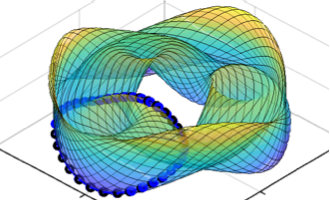 system to very low dimensional invariant manifolds. With the help of this reduction, previously unimaginable computational speeds can be achieved in computing nonlinear forced response, including detached branches (isolas) and quasiperiodic response near internal resonances. We discuss and illustrate these recent developments on examples ranging from high-dimensional oscillator systems to nonlinear finite element models of beams and shells. We will also briefly introduce an open-source numerical package that performs such computations for general nonlinear vibration problems.
system to very low dimensional invariant manifolds. With the help of this reduction, previously unimaginable computational speeds can be achieved in computing nonlinear forced response, including detached branches (isolas) and quasiperiodic response near internal resonances. We discuss and illustrate these recent developments on examples ranging from high-dimensional oscillator systems to nonlinear finite element models of beams and shells. We will also briefly introduce an open-source numerical package that performs such computations for general nonlinear vibration problems.
Bio-sketch of George Haller
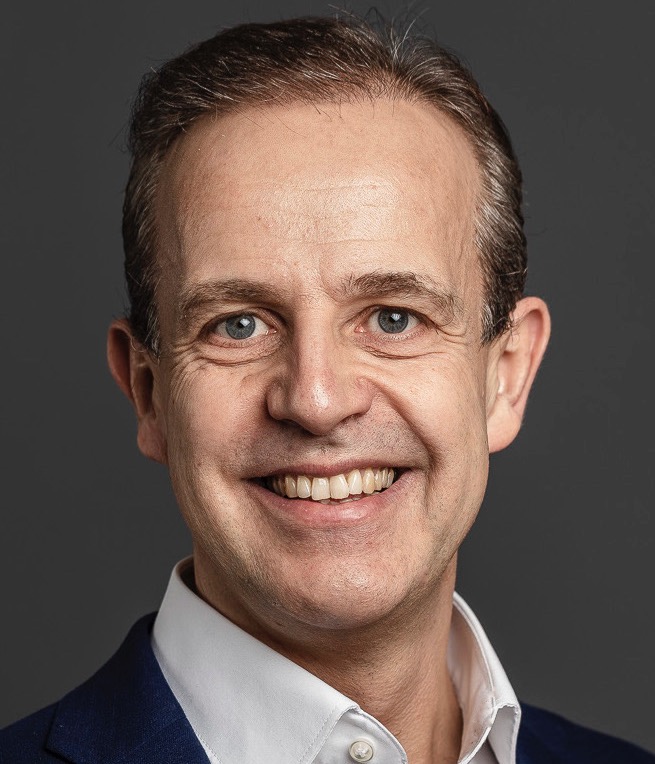
George Haller received his Ph.D. in Applied Mechanics at Caltech in 1993. He then held tenured faculty positions at Brown University, MIT and McGill University. He currently holds the Chair in Nonlinear Dynamics at ETH Zürich. His honors include an Alfred P. Sloan Research Fellowship in mathematics, an Albert Szent-Gyorgyi Fellowship, an ASME Thomas J.R. Hughes Young Investigator Award, and an Honorary Doctorate from the Budapest University of Technology and Economics. He is an elected external member of the Hungarian Academy of Sciences, an elected Fellow of the American Physical Society (APS) and an elected Fellow of the Society of Industrial and Applied Mathematics (SIAM). His research is focused on nonlinear dynamical systems with applications to mechanical vibrations, model reduction and coherent structures in turbulence.
COVID-19: Evolution of infection dynamics
B. Balachandran
Minta Martin Professor of Engineering
Department of Mechanical Engineering
University of Maryland, College Park, MD 20742, USA
E-mail: balab@umd.edu
COVID-19 infection dynamics is studied by using statistical models based on the generalized Logistic Function model and enhanced compartmental models with and without delays. It is shown as to how forecasting may be done on the spreading of the infection in a chosen population by using these models. In the compartmental model, the population is divided into susceptible, exposed, infected, quarantined, recovered, and deceased compartments, and a set of delay differential equations are used to describe the
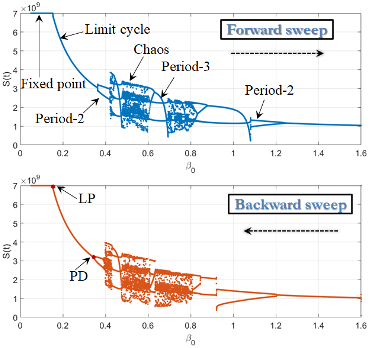 system. Some original aspects of the work include the use of distributed time delays to capture the variability in the response of one individual to another and the use of a time varying infection rate parameter. The critical role of data is elucidated, and it is discussed as to how the compartmental model can be used to understand the effectiveness of measures such as quarantining in terms of the flattening the evolution of the daily increment in infection cases. Short-term and long-term forecasts are addressed. The obtained results can be useful for furthering our understanding of disease dynamics as well as for planning purposes and answering questions such as when the COVID-19 infection dynamics may evolve as a seasonal flu.
system. Some original aspects of the work include the use of distributed time delays to capture the variability in the response of one individual to another and the use of a time varying infection rate parameter. The critical role of data is elucidated, and it is discussed as to how the compartmental model can be used to understand the effectiveness of measures such as quarantining in terms of the flattening the evolution of the daily increment in infection cases. Short-term and long-term forecasts are addressed. The obtained results can be useful for furthering our understanding of disease dynamics as well as for planning purposes and answering questions such as when the COVID-19 infection dynamics may evolve as a seasonal flu.
Figure 1: Bifurcation diagram on a Poincaré section shown in the state-control space of the susceptible population and the infection rate.
Acknowledgements
Technologies and Tools for Pandemics Initiative, CECD, University of Maryland, College Park, MD; Minta Martin Professorship; Neilom Foundation
References
Liu, X., Zheng, X., and Balachandran, B. 2020. COVID-19: data-driven dynamics, statistical and distributed delay models, and observations, Nonlinear Dynamics, Vol. 101, pp:1527–1543. //doi.org/10.1007/s11071-020-05863.
Bio-sketch of Bala Balachandran
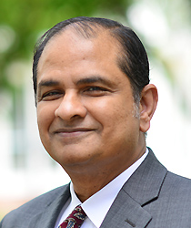
Dr. Balachandran received his B. Tech (Naval Architecture) from the Indian Institute of Technology, Madras, India, M.S. (Aerospace Engineering) from Virginia Tech, Blacksburg, VA, USA and Ph.D. (Engineering Mechanics) from Virginia Tech. Currently, he is a Minta Martin Professor of Engineering at the University of Maryland, where he has been since 1993. His research interests include nonlinear phenomena, dynamics and vibrations, and control. The publications that he has authored/co-authored include a Wiley textbook entitled "Applied Nonlinear Dynamics: Analytical, Computational, and Experimental Methods" (1995, 2006), a Cambridge University Press textbook entitled "Vibrations" (2019), and a co-edited Springer book entitled “Delay Differential Equations: Recent Advances and New Directions” (2009). Currently, he serves as the Editor of the ASME Journal of Computational and Nonlinear Dynamics and a Contributing Editor of the International Journal of Non-Linear Mechanics. He is a Fellow of ASME and AIAA and a senior member of IEEE.
Towards a high-performance Foucault pendulum for the measurement of relativistic gravity
M.P. Cartmell
Professor of Nonlinear Dynamics
Aerospace Centre of Excellence, Department of Mechanical & Aerospace Engineering, University of Strathclyde, Glasgow, G1 1XJ, Scotland, UK
E-mail: matthew.cartmell@strath.ac.uk
We have mathematically modelled a Foucault pendulum initially for prediction of the Newtonian rotation of the Earth, taking account of latitude and incorporating parametric excitation of the length. An experiment has also been built and tested in which a 4.65 m pendulum with a linear drive system for the parametric excitation was tested over time. The results were encouraging, and we are now designing a high-performance version to resolve the tiny motions due to the relativistic effects of Lense-Thirring precession, or frame-dragging, for which a first approximation at any latitude can be obtained through an analogy between Maxwellian electrodynamics and gravitomagnetism. This experimental measurement will require an increase
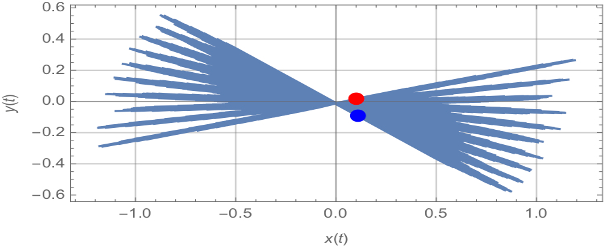 in resolution of ~ 2×10^9over that required for measuring the rotation of the Earth. Lense-Thirring precession is calculated to be of the order of 181.5 mas/year in Glasgow and its terrestrial measurement is a goal still to be achieved. The advances in instrumentation over the last 35 years since this possibility was first discussed means that this aim could be in sight.
in resolution of ~ 2×10^9over that required for measuring the rotation of the Earth. Lense-Thirring precession is calculated to be of the order of 181.5 mas/year in Glasgow and its terrestrial measurement is a goal still to be achieved. The advances in instrumentation over the last 35 years since this possibility was first discussed means that this aim could be in sight.
Figure1: Theoretical response of the Foucault Pendulum to rotation of the Earth over time. The Foucault pendulum is shown here under principal parametric excitation at 0.075m peak amplitude for a nominal pendulum length of 8m and a bob mass 2kg, and located in Glasgow, Scotland, UK. The red dot denotes the start position, the blue dot the end position. Axes in metres.
References
Cartmell, MP.; Faller, JE.; Lockerbie, NA.; Handous, E. (2020) On the modelling and testing of a laboratory-scale Foucault pendulum as a precursor for the design of a high-performance measurement instrument. Proceedings of the Royal Society A, 476: 20190680. http://dx.doi.org/10.1098/rspa.2019.0680.
Bio-sketch of Matthew Cartmell
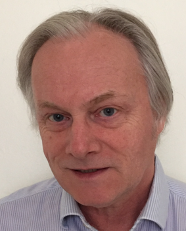
Matthew Cartmell graduated PhD from the University of Edinburgh in 1984 and is currently the Professor Nonlinear Dynamics at the University of Strathclyde, where he has been since 2016. He was the Professor of Applied Dynamics at the University of Glasgow from 1998 to 2006 and then the James Watt Professor of Mechanical Engineering at the University of Glasgow from 2006 to 2012 after which he became the Professor of Nonlinear Mechanics at the University of Sheffield until 2016. Matthew Cartmell was the Editor in Chief of the Journal of Sound and Vibration from 2009 to 2017. He was also Editor in Chief of the Part C of the Proceedings of Mechanical Engineers during 2009-2011. Matthew Cartmell is a senior member of the AIAA. His research interests include nonlinear vibration and control, symbolic computational dynamics, space tether mechanics, and gravitational physics.
Nonlinear acoustic non-reciprocity
Alexander F. Vakakis
Department of Mechanical Science and Engineering
University of Illinois at Urbana – Champaign, Urbana, USA
E-mail: avakakis@illinois.edu
We discuss constructive utilization of intentional strong nonlinearity for passively breaking classical reciprocity in impulsively loaded acoustic waveguides. Considering first an 1D lattice with strong nonlinearity, asymmetry, and internal scale hierarchy we study targeted wave propagation and the nonlinear mechanisms that govern it. Depending on the location and intensity of the impulse, breather propagation, wave arrest or motion localization may occur; these are explained in terms of the nonlinear pass and stop bands (nPBs and nSBs) of the lattice. Then we focus on a class of 1D waveguides composed of two nonlinear component lattices, a “stiffer” and a “softer” one that are connected at an interface. Non-reciprocity in this waveguide can be achieved by tuning the nPBs of the component lattices in the frequency-energy domain, whereby, (a) at low energy wave arrest at the interface occurs; (b) at intermediate energy only waves from one side of the interface can transmit; and (c) at high energy wave transmission is blocked at both sides of the interface. Experiments validate these theoretical predictions. Passive acoustic non-reciprocity can find broad applications, e.g., for targeted energy transfer in the wavenumber/frequency domain, metamaterials, acoustic and vibration isolation, and other fields.
Bio-sketch of Alexander Vakakis
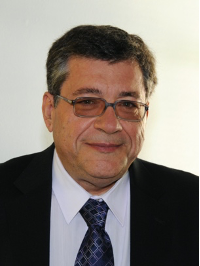
Alexander F. Vakakis has a Ph.D. from Caltech (1990), an M.Sc. from Imperial College (1984), and a Diploma in Mechanical Engineering from the University of Patras, Greece (1984). He is the Donald Biggar Willett Professor of the College of Engineering in the Department of Mechanical Science and Engineering at UIUC where he co-directs the LNDV Laboratory (http://lndvl.mechse.illinois.edu/). He received the Alexander von Humboldt Research Award (2020), the Edmond J. Safra Fellowship at Technion (2020), the ASME Thomas K. Caughey Award in nonlinear dynamics (2014), the Thomas Bernard Hall Prize (2012) and the PE Publishing Award (2009) both from the Institution of Mechanical Engineers (UK). Since 2015 he is a National High-End Foreign Expert in China. He has published over 300 archival publications, 3 patents, and 6 technical monographs. His research interests include among other topics, dynamics, vibrations and acoustics, NEMS/MEMS, and system identification and reduced-order modeling.
Can nonlinear dynamics improve medical diagnostics?
C. Nataraj
Moritz Endowed Chair Professor of Engineered Systems
Director, Villanova Center for Analytics of Dynamic Systems
Villanova, PA 19085, USA
E-mail: c.nataraj@villanova.edu
Medical diagnostics is a very difficult problem as evidenced by the large numbers of errors committed even by the best experts and in the best of circumstances. In the US alone, more than 160,000 deaths occur every year because of diagnostic errors. Of the many possible reasons for this dire situation, the primary one is that the human body is a complex, nonlinear dynamic system of systems. It is of course well known that there are many enduring mysteries that will take many years to discover. Notwithstanding that, there are many possible opportunities to exploit our present understanding to make diagnostics better. This talk will hence focus on the relevance of nonlinear dynamics to medical diagnostics. We will first provide a brief overview of our research over the past 15 years using signal processing and machine learning (ML) to several important problems in medical diagnostics including brain damage, intubation and cardiopulmonary resuscitation. The typical algorithm development will be explained with reference to example problems. Importantly, the limitations of such approaches will be discussed. As opposed to ML that simply learns from data and provides limited insight, nonlinear dynamics has been historically used to explain many important phenomena in the human body, and has the potential to mitigate limitations of ML. In research collaboration with medical experts, we have been passionately driving to develop robust diagnostic algorithms by exploiting the powerful predictive power of nonlinear dynamics. We will discuss these approaches and results from our early efforts in diagnostics and outline future research directions with the hope that this talk will generate new and exciting discussions.
Acknowledgements
Funded by several grants from National Institutes of Health. Collaborators: Children’s Hospital of Philadelphia, University of California San Diego Hospital.
Bio-sketch of ‘Nat’ C Nataraj
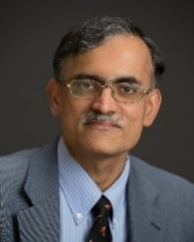
Dr. C. Nataraj (Nat) holds the Moritz Chair Professorship in Engineered Systems and is the Founding Director of the Villanova Center for Analytics of Dynamic Systems (vcads.org) at Villanova University. Nat’s research expertise is in dynamic systems modeling, analysis and diagnostics with applications to machinery, robotics and biomedical systems. Nat has served as Chair of Department of Mechanical Engineering, and as the founding Director of the Center for Nonlinear Dynamics & Control. He has taught over 23 courses, has published a textbook in Vibrations along with numerous papers, and holds three patents. Nat is a Life Fellow of ASME and a Senior Member of IEEE. He is the Editor-in-Chief of Springer-Nature Journal of Vibration Engineering & Technologies and serves as the Nodycast editor for Nonlinear Dynamics. Nat’s research has been funded by ONR, DARPA, NSF and NIH. His research has received national media attention including a TEDx talk and articles in Philadelphia Inquirer, US News and World Report, Forbes and Wired Magazines.
Applications of self-excited oscillation and weakly mode coupling to ultrasensitive micro-sensors
Hiroshi YABUNO
University of Tsukuba, Faculty of Engineering, Information and Systems
E-mail: yabuno@esys.tsukuba.ac.jp
This talk addresses the utilization of self-excitation and weakly coupling for resonators in ultrasensitive sensors. Vibrational sensors are suited for online monitoring because of their fast response and ability to measure instantly and continuously. Also, their miniaturization realizes much higher resolution and sensitivity. We begin by discussing the sensitivity based on the natural frequency shift of the resonator. For mass and stiffness sensing, the detection method for the natural frequency shift by self-excited oscillation is characterized comparing with that by external excitation. Self-excited oscillation automatically compensates for the viscous damping effects of the environment on the resonators, thus ensuring direct and accurate detection of the natural frequency shift in very high viscosity, where the peak of the frequency response curve is ambiguous or does not exist. Also, the shift of the Hopf bifurcation point causing the self-excited oscillation can be utilized in vibrational viscometers capable of high-viscosity measurement and for the measurement of added mass for an object oscillating in a viscous fluid. Another method, introduced for ultrasensitive mass sensing, is based on the eigenmode shift in multiple weakly coupled resonators. Also in this system, the self-excitation compensates for the viscous damping effects to enable direct detection of the eigenmode shift. The utilization of eigenmode shift greatly improves the sensitivity for mass sensing based on the natural frequency shift and would overcome the limitations of miniaturization in manufacturing process by introducing new concepts as virtual resonator and virtual coupling.
Bio-sketch of Hiroshi Yabuno
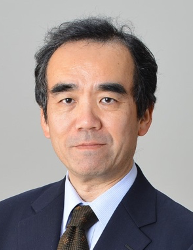
Hiroshi Yabuno received the B.E., M.E., and Dr. Eng. degrees from Keio University, Japan, in 1984, 1986, and 1990, respectively. From 1990 to 1992, he was with the Institute of Physical and Chemical Research (RIKEN), Japan. In 1992, he joined the Institute of Applied Physics, University of Tsukuba, Tsukuba, Japan, where he is currently a Professor at the Graduate School of Systems and Information Engineering. Also, in 1997, he was a Visiting Scholar at the Virginia Polytechnic Institute and State University, and in 2002 and 2008, he was a Visiting Professor at the University of Rome “La Sapienza,” Italy. His research interests include nonlinear dynamics and control of mechanical systems and positive utilization of nonlinear phenomena to realize high-performance mechanical systems. Dr. Yabuno is a fellow of JSME and a member of ASME and the congress committee of IUTAM. He was a recipient of the John F. Alcock Memorial Prize and the Thomas Hawksley Gold Medal from IMechE, and the JSME Medal for Outstanding Paper from JSME. He serves as an Associate Editor for Nonlinear Dynamics, the Journal of Vibration and Control., and the International Journal of Dynamics and Control.
Internal resonances and applications in vibratory energy harvesting
Li-Qun Chen
Shanghai Key Laboratory of Mechanics in Energy Engineering, Shanghai Institute of Applied Mathematics and Mechanics, School of Mechanics and Engineering Science, Shanghai University, Shanghai, 200444, China
E-mail: chenliqun@hit.edu.cn
Internal resonance is a typical nonlinear phenomenon. Internal resonance is usually associated with double jumps, two peaks bending to the left and the right respectively in amplitude-frequency responses. The talk begins with two cases in which 1:2 internal resonance results in the change of hardening and softening characteristics in the amplitude-frequency responses. One case is a pipe conveying fluid flowing in the supercritical speed, and the analysis is based on a discretized model. The other case is coupled cantilevers subjected to magnetic interaction, and the analysis is based on a distributed model. In both cases, with the increase or the decrease of a parameter, multi-scale analysis reveals that double jumps evolve from a jump with softening characteristic and disappear as a jump with hardening characteristic, and the analytical outcomes are supported by numerical simulations. Double jumps with internal resonance may be a possible mechanism to enhance energy harvesting by broadening the harvester working frequency bands. An electromagnetic device with snap-through nonlinearity is proposed as an archetype of an internal resonance energy harvester with double jumps in the amplitude-frequency responses derived from the method of multiple scales. To show the effectiveness, the averaged root-mean-square output voltages are calculated under four kinds of noses, namely, the Gaussian white noise, the colored noise defined by a second-order filter, the narrow-band noise, and exponentially correlated noise. Finally, an L-shaped cantilevered structure laminated with a piezoelectric patch and augmented with frequency tuning magnets is treated analytically, numerically and experimentally. All these works demonstrate that the internal resonance increases the opening bandwidth and the output electricity.
Bio-sketch of Li-Qun Chen
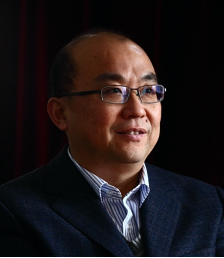
Li-Qun Chen received his B. Eng (Mechanical Engineering) from Liaoning Science and Technology, Anshan, China, M. S. (Mechanics) from Northeastern University, Shenyang, China, and Ph. D. (Mechanics) from Shanghai Jiao Tong University, Shanghai, China. As a Changjiang Distinguished Professor awarded by the Ministry of Education, PRC in 2008, he is currently working in Shanghai University and Harbin Institute of Technology, Shenzhen. His research interests include nonlinear reduction of vibrations, vibratory energy harvesting, and vibrations of gyroscopic continua. His research was supported by the National Science Fund for Distinguished Young Scholars (2008-2012) and awarded the National Natural Science Prize (2017). He has been one of Most Cited Chinese Researchers (Elsevier) since 2014. He coauthored 4 textbooks in Chinese, “Theoretical Mechanics” (2006, 2014), “Mechanics of Vibrations” (1999, 2011, 2019), “Nonlinear Vibrations” (2001, 2020), and “Nonlinear Dynamics” (2000), and 2 Springer books, “Chaos in Attitude Dynamics of Spacecraft” (2012) and “Dynamics of Vehicle-Road Coupled System” (2015). Currently, he serves as Associate-Editor-in-Chief of Applied Mathematics and Mechanics (English Edition) and Associate Editor of Nonlinear Dynamics.
SPECIAL SESSION and PANEL: “Complex dynamics of COVID-19: modeling, prediction and control”
Modeling, prediction, mitigation and vaccine policy for COVID-19 using big data and fractional calculus
YangQuan Chen
Mechatronics, Embedded Systems and Automation Laboratory, Department of Mechanical Engineering University of California, Merced, CA,95343, USA
E-mail: ychen53@ucmerced.edu
Project website: https://mechatronics.ucmerced.edu/covid19
This presentation will introduce our group research efforts in COVID-19 epidemic modeling, prediction, mitigation and vaccine policy with the help of Google mobility data as well as Facebook Symptom Dataset. In modeling we focused on fractional order generalized SEIR model and its variants. As one of the active models in the https://viz.covid19forecasthub.org/, we shall report our weekly predictions since June 2020. Then we report our participation in the MMODS (multi-model outbreak decision support https://midasnetwork.us/mmods/ ) team project with scenarios and mitigation options study. Finally, we share some recent research on vaccine fairness priority scheduling. Future research efforts are discussed on long term COVID-19 monitoring and seasonal coupling effect with regular influenza.
Bio-sketch of YangQuan Chen
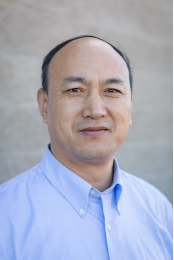
YangQuan Chen earned his Ph.D. from Nanyang Technological University, Singapore, in 1998. He had been a faculty of Electrical Engineering at Utah State University (USU) from 2000-12. He joined the School of Engineering, University of California, Merced (UCM) in summer 2012 teaching “Mechatronics”, “Engineering Service Learning” and “Unmanned Aerial Systems” for undergraduates; “Fractional Order Mechanics”, “Linear Multivariable Control”, “Nonlinear Controls” and “Advanced Controls: Optimality and Robustness” for graduates. His research interests include mechatronics for sustainability, cognitive process control (smart control engineering enabled by digital twins), small multi-UAV based cooperative multi-spectral “personal remote sensing”, applied fractional calculus in controls, modeling and complex signal processing; distributed measurement and control of distributed parameter systems with mobile actuator and sensor networks. He received Research of the Year awards from USU (2012) and UCM (2020). He was listed in Highly Cited Researchers by Clarivate Analytics in 2018 and 2019. His lab website is http://mechatronics.ucmerced.edu/ and his publication list is at https://scholar.google.com/citations?user=RDEIRbcAAAAJ&hl=en (Email: ychen53@ucmerced.edu).
Computational modeling and data analysis of COVID19 outbreak
J. Tenreiro Machado
Institute of Engineering, Polytechnic of Porto, Dept. of Electrical Engineering
E-mail: jtm@isep.ipp.pt
The COVID19 outbreak is studied by means of three computational approaches. The first consists of using real-world data about the number of infected people around the world. The second analyses and compares the genetic code of several virus including the SARS-CoV-2. The third adopt evolutionary concepts to construct an evolutionary algorithm that somehow mimics real-world situations. In the three cases, hierarchical clustering and the multidimensional scaling allow a superior visualization of the results.
References
J. Tenreiro Machado, António Lopes, Rare and extreme events: The case of COVID-19 pandemic, Nonlinear Dynamics, vol. 100, Issue 3, pp. 2953-2972, 2020. https://doi.org/10.1007/s11071-020-05680-w.
J. Tenreiro Machado, João M. Rocha-Neves, José P. Andrade, Computational analysis of the SARS-CoV-2 and other viruses based on the Kolmogorov’s complexity and Shannon’s information theories, Nonlinear Dynamics, vol. 101, number 3, pp. 1731-1750, 2020. https://doi.org/10.1007/s11071-020-05771-8. ISSN: 0924-090X.
J. Tenreiro Machado, An Evolutionary Perspective of Virus Propagation, Mathematics, vol. 8, issue 5, 779, 2020. https://doi.org/10.3390/math8050779.
Bio-sketch of J. Tenreiro Machado
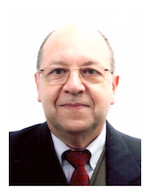
J. Tenreiro Machado graduated with ‘Licenciatura’ (1980), PhD. (1989) and ‘Habilitation’ (1995), in Electrical and Computer Engineering at the University of Porto. Presently he is Principal Coordinator Professor at the Institute of Engineering, Polytechnic Institute of Porto, Dept. of Electrical Engineering. His research Interests include Complex Systems, Nonlinear Dynamics, Fractional Calculus, Modeling, Entropy, Control, Evolutionary Computing, Genomics. Associate Editor of several journals including Nonlinear Dynamics. Editor in Chief of Mathematics and Section Editor-in-Chief of Entropy. He was listed in Highly Cited Researchers by Clarivate Analytics, crossfield area, years 2019 and 2020.
